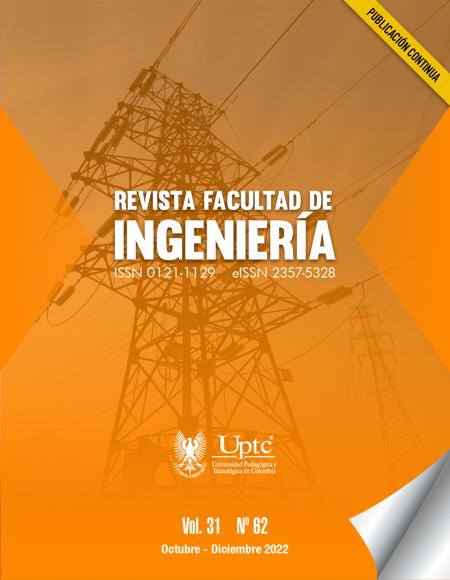Process Model Represented in BPMN for Guiding the Implementation of Software Development Practices in Very Small Companies Harmonizing DEVOPS and SCRUM

Abstract
The business process model is a graphic representation mechanism that helps improve the understanding of a context, the steps undertaken, and the validations and business rules that are part of its universe. This article proposes an implementation model of practices for software development based on DevOps suggestions and how these might be executed within Scrum by the Scrum Development Team (SDT). Present a practice implementation model that integrates DevOps suggestions to be executed by a scrum development team (SDT). The practices for software development based on DevOps were identified. The moment in which the information provided is helpful for the team's continuous improvement within SCRUM was determined. With the practices identified, modeling the general process of implementing practices using BPMN was conducted, followed by detailed modeling. Finally, experts executed the evaluation of the detailed process model. A 12-question survey was implemented to understand the business process model created for implementing practices. This instrument was then made available to experts in the field to obtain feedback on what has been done. The results obtained are promising. The set of practices suggested by DevOps and its integration in Scrum allows for establishing a preventive quality approach for the best development of software products. Using business process models represented by BPMN allows companies to understand and adopt the proposed practices quickly.
Keywords
Software Engineering, DevOps, SCRUM, Business Process Modeling, Software Quality Assurance
References
- S. Martinez-Fernandez et al., “Continuously Assessing and Improving Software Quality With Software Analytics Tools: A Case Study,” IEEE Access, vol. 7, pp. 68219–68239, 2019. https://doi.org/10.1109/ACCESS.2019.2917403 DOI: https://doi.org/10.1109/ACCESS.2019.2917403
- L. E. Lwakatare et al., “DevOps in practice: A multiple case study of five companies,” Information and Software Technology, vol. 114, pp. 217–230, 2019. https://doi.org/10.1016/j.infsof.2019.06.010 DOI: https://doi.org/10.1016/j.infsof.2019.06.010
- T. Laukkarinen, K. Kuusinen, T. Mikkonen, “Regulated software meets DevOps,” Information and Software Technology, vol. 97, pp. 176–178, 2018. https://doi.org/10.1016/j.infsof.2018.01.011 DOI: https://doi.org/10.1016/j.infsof.2018.01.011
- A. D. Robinson, “Very small entities (VSE); The final systems engineering (SE) frontier,” in 12th Annual IEEE International Systems Conference, 2018, pp. 1–4. https://doi.org/10.1109/SYSCON.2018.8369570 DOI: https://doi.org/10.1109/SYSCON.2018.8369570
- M. Pastrana, H. Ordoñez, C. Cobos, “ISO 29110 en Colombia: de la teoría a la práctica - ISO 29110 in Colombia: from theory to practice,” Guillermo de Ockham: Revista Científica, vol. 17, no. 2, pp. 71–80, 2019. DOI: https://doi.org/10.21500/22563202.4299
- A. Hemon, B. Lyonnet, F. Rowe, B. Fitzgerald, “From Agile to DevOps: Smart Skills and Collaborations,” Information Systems Frontiers, vol. 22, no. 4, pp. 927–945, 2020. https://doi.org/10.1007/s10796-019-09905-1 DOI: https://doi.org/10.1007/s10796-019-09905-1
- M. Pastrana, H. Ordóñez, A. Ordonez, L. H. Thom, L. Merchan, “Optimization of the Inception Deck Technique for Eliciting Requirements in SCRUM Through Business Process Models,” Lecture Notes in Business Information Processing, vol. 308, pp. 649–655, 2018. https://doi.org/10.1007/978-3-319-74030-0_52 DOI: https://doi.org/10.1007/978-3-319-74030-0_52
- R. Jabbari, N. bin Ali, K. Petersen, B. Tanveer, “What is DevOps? A Systematic Mapping Study on Definitions and Practices,” in Proceedings of the Scientific Workshop of XP, 2016. https://doi.org/10.1145/2962695.2962707 DOI: https://doi.org/10.1145/2962695.2962707
- N. Tomas, J. Li, H. Huang, “An Empirical Study on Culture, Automation, Measurement, and Sharing of DevSecOps,” in International Conference on Cyber Security and Protection of Digital Services (Cyber Security), 2019, pp. 1–8. https://doi.org/10.1109/CyberSecPODS.2019.8884935 DOI: https://doi.org/10.1109/CyberSecPODS.2019.8884935
- Y. Wang, M. V. Mäntylä, S. Demeyer, K. Wiklund, S. Eldh, T. Kairi, “Software test automation maturity: A survey of the state of the practice,” in Proceedings of the 15th International Conference on Software Technologies, 2020, pp. 27–38. DOI: https://doi.org/10.5220/0009766800270038
- M. Z. Toh, S. Sahibuddin, R. A. Bakar, “A Review on DevOps Adoption in Continuous Delivery Process,” in International Conference on Software Engineering & Computer Systems and 4th International Conference on Computational Science and Information Management, 2021, pp. 98–103. https://doi.org/10.1109/ICSECS52883.2021.00025 DOI: https://doi.org/10.1109/ICSECS52883.2021.00025
- S. Vadapalli, DEVOPS: continuous delivery, integration, and deployment with DEVOPS. Packt Publishing, 2018.
- S. Vadapalli, DevOps: Continuous Delivery, Integration, and Deployment with DevOps Dive into the core DevOps strategies. 2018. https://www.mendeley.com/catalogue/6e5717c5-64d8-3c7c-8183-a659c7018957/?utm_source=desktop&utm_medium=1.19.8&utm_campaign=open_catalog&userDocumentId=%7Bd0423fe3-94bc-4497-8289-f037a01fd183%7D
- V. Ivanov, K. Smolander, “Implementation of a DevOps Pipeline for Serverless Applications,” Lecture Notes in Computer Science, vol. 11271 LNCS, pp. 48–64, 2018. https://doi.org/10.1007/978-3-030-03673-7_4 DOI: https://doi.org/10.1007/978-3-030-03673-7_4
- A. Manuel, P. Pastrana, H. A. Ordoñez Erazo, C. A. Cobos Lozada, “Documenting and implementing DevOps good practices with test automation and continuous deployment tools through software refinement,” Periodicals of Engineering and Natural Sciences (PEN), vol. 9, no. 4, pp. 854–863, 2021. https://doi.org/10.21533/PEN.V9I4.2239 DOI: https://doi.org/10.21533/pen.v9i4.2239
- Q.-M. Dai, R.-F. Mao, H. Huang, G.-P. Rong, H.-F. Shen, D. Shao, “DevSecOps: Exploring Practices of Realizing Continuous Security in DevOps,” Journal of Software, vol. 32, no. 10, pp. 3014–3035, 2021. https://doi.org/10.13328/j.cnki.jos.006276
- K. Schwaber, J. Sutherland, La Guía de Scrum. La Guía Definitiva de Scrum: Las Reglas del Juego, 2020. https://scrumguides.org/docs/scrumguide/v2020/2020-Scrum-Guide-Spanish-European.pdf
- N. Railic, M. Savic, “Architecting Continuous Integration and Continuous Deployment for Microservice Architecture,” in 20th International Symposium INFOTEH-JAHORINA, 2021. https://doi.org/10.1109/INFOTEH51037.2021.9400696 DOI: https://doi.org/10.1109/INFOTEH51037.2021.9400696
- M. A. Pastrana Pardo, H. A. Ordóñez Erazo, C. A. Cobos Lozada, “Approach to the Practices of Software Development Based on DevOps and SCRUM Used in Very Small Entities,” Revista Facultad de Ingeniería, vol. 31, no. 61, pp. e14828, 2022. https://doi.org/10.19053/01211129.V31.N61.2022.14828 DOI: https://doi.org/10.19053/01211129.v31.n61.2022.14828
- J. Díaz, R. Almaraz, J. Pérez, J. Garbajosa, “DevOps in practice,” in Proceedings of the 19th International Conference on Agile Software Development: Companion, 2018, pp. 1–3. https://doi.org/10.1145/3234152.3234199 DOI: https://doi.org/10.1145/3234152.3234199